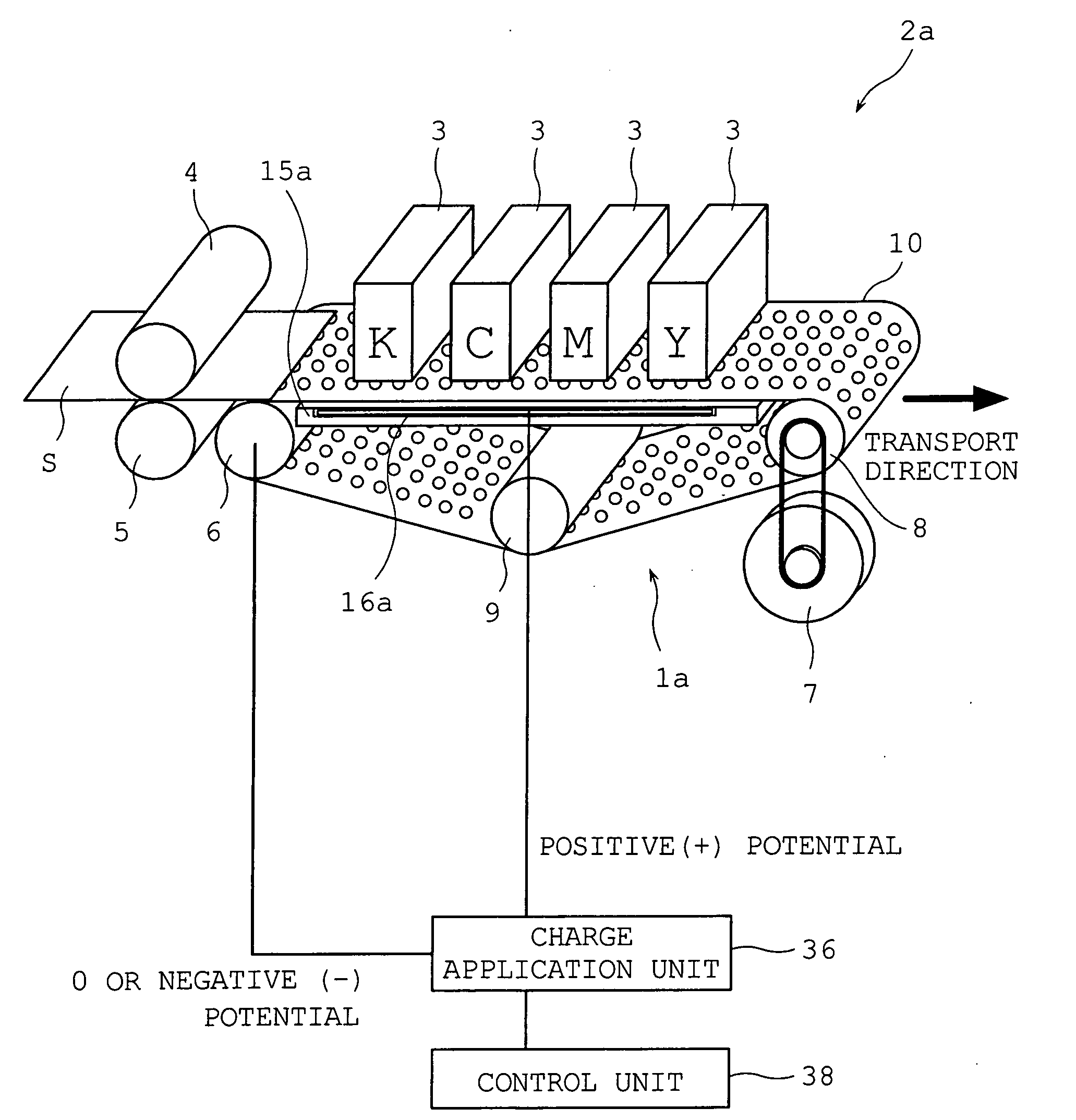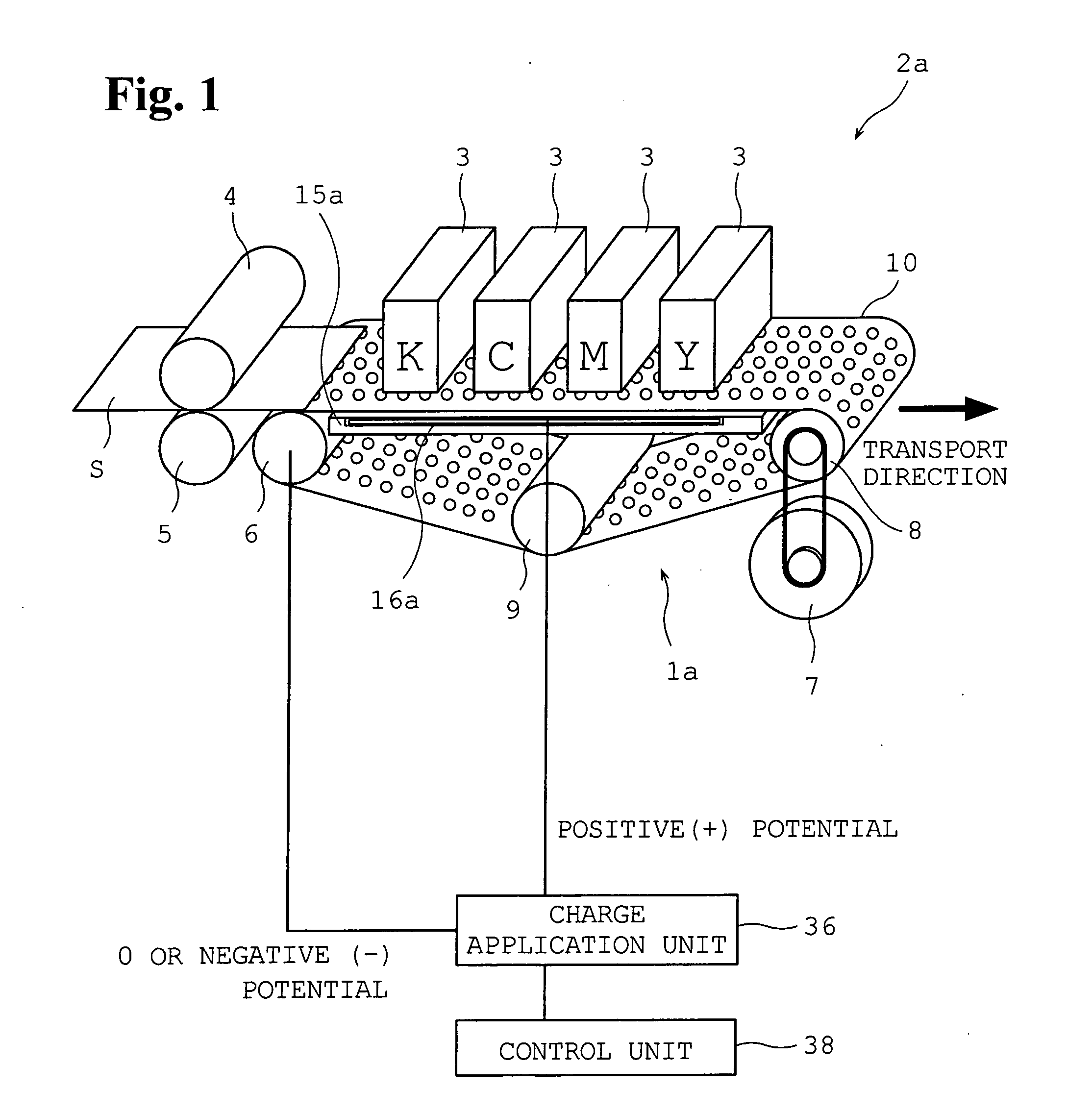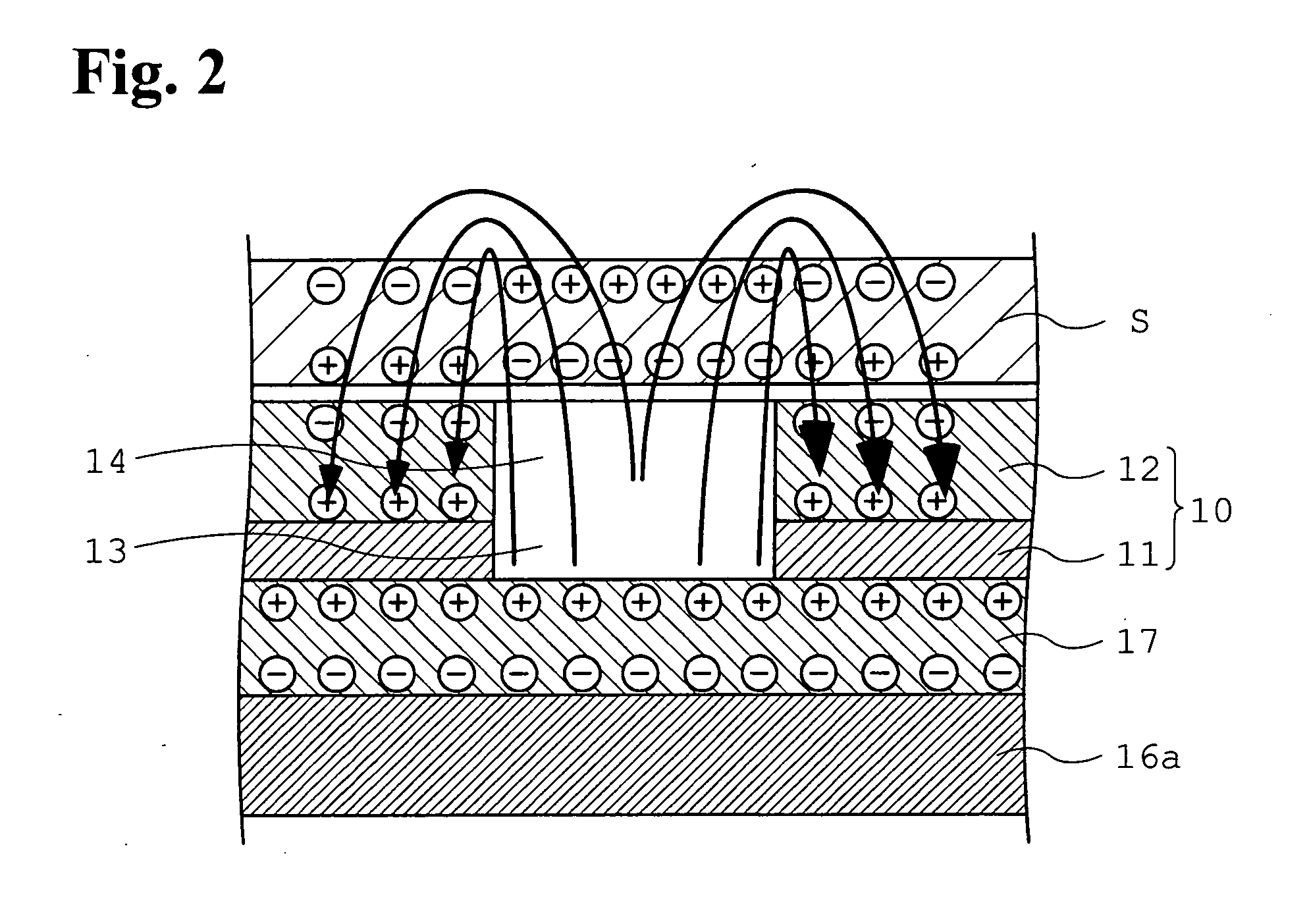Sheet transporting device
a technology of transporting device and sheet, which is applied in the direction of transportation and packaging, electrographic process, instruments, etc., can solve the problems of increasing the likelihood of paper jams occurring during transportation, increasing the load of transportation, and increasing power consumption, so as to improve image reproducibility, improve the separation of sheets, and reduce the power of adsorption
- Summary
- Abstract
- Description
- Claims
- Application Information
AI Technical Summary
Benefits of technology
Problems solved by technology
Method used
Image
Examples
first embodiment (first example , see fig.1 and fig.2)
1. First Embodiment (First Example, See FIG. 1 and FIG. 2)
[0066]As is illustrated in FIG. 1, an image forming apparatus 2a of a first example is configured such that plural print heads 3 having different colors of inks are disposed facing down, spaced at certain intervals along a transport direction of a sheet S denoted by an arrow, and can jet ink droplets toward the sheet that is transported thereunder. In the example shown, four print heads jetting inks of four colors, C (cyan), K (black), M (magenta), and Y (yellow), respectively, are placed.
[0067]Directly under these print heads 3, a sheet transporting device 1a for transporting a sheet S along the print heads is disposed. Before the print heads 3 in the transport direction, first, a registration roller 4 and a driven roller 5 are provided adjacent to a paper feed mechanism which is not shown to feed a sheet S to the sheet transporting device 1a in the following stage.
[0068]The sheet transporting device 1a is configured such th...
second embodiment (second example , see fig.3 and fig.4)
2. Second Embodiment (Second Example, See FIG. 3 and FIG. 4)
[0083]A sheet transporting device of a second example is installed in the same image forming apparatus as the image forming apparatus 2a of the first example and the fundamental principle of electrostatic adsorption is also the same as in the first example. Therefore, the following description focuses on the structure of a conveyor belt 20 which is different from that of the first example, omitting the description of the image forming apparatus and the description of the common part of the electrostatic adsorption mechanism.
[0084]In the sheet transporting device of the first example, the through hole 13 in the conductor 11 communicates with the opening 14 in the dielectric layer 12 wherever holes are bored; that is, all holes in the conveyor belt 10 are completely pierced through holes. A dissimilar point of the second example is as follows: in some holes, there is no opening in the dielectric layer 12 formed on top of the ...
third embodiment (third example , see fig.5 and fig.6)
3. Third Embodiment (Third Example, See FIG. 5 and FIG. 6)
[0093]A sheet transporting device 1b of a third example is installed in the same image forming apparatus 2b as the image forming apparatus 2a of the first example and the fundamental principle of electrostatic adsorption is the same as in the first example. Therefore, the following description focuses on the structure of a fixed electrode 16b which is different from that of the first example, omitting the description of the image forming apparatus 2b and the description of the common part of the electrostatic adsorption mechanism.
[0094]As is illustrated in FIG. 5, underneath the above conveyor belt 10 which is the transport path of a sheet S, a platen base 15b of a rectangular plate shape which supports the conveyor belt 10 is installed. This platen base 15b includes an insulating body in which plural fixed electrodes 16b (five electrodes in the third example) are embedded spaced at a given interval. These fixed electrodes 16...
PUM
 Login to View More
Login to View More Abstract
Description
Claims
Application Information
 Login to View More
Login to View More - R&D
- Intellectual Property
- Life Sciences
- Materials
- Tech Scout
- Unparalleled Data Quality
- Higher Quality Content
- 60% Fewer Hallucinations
Browse by: Latest US Patents, China's latest patents, Technical Efficacy Thesaurus, Application Domain, Technology Topic, Popular Technical Reports.
© 2025 PatSnap. All rights reserved.Legal|Privacy policy|Modern Slavery Act Transparency Statement|Sitemap|About US| Contact US: help@patsnap.com



